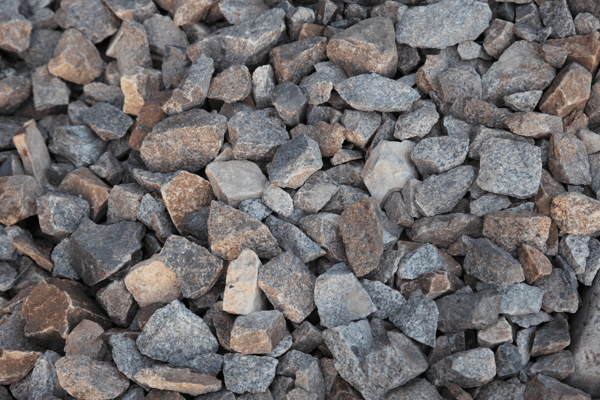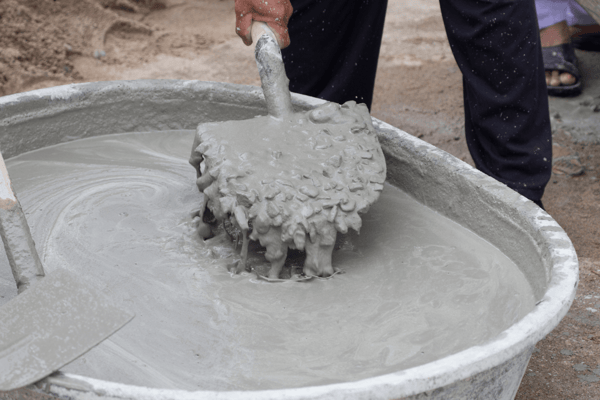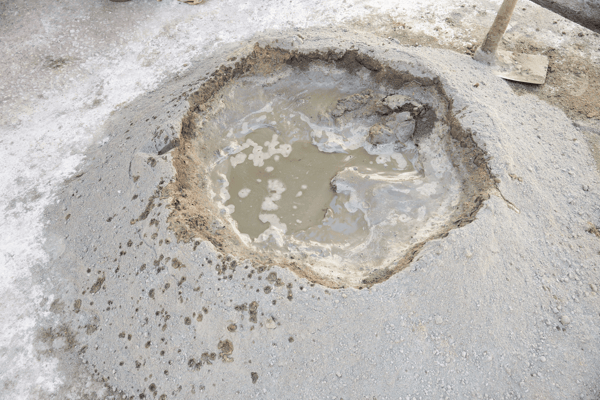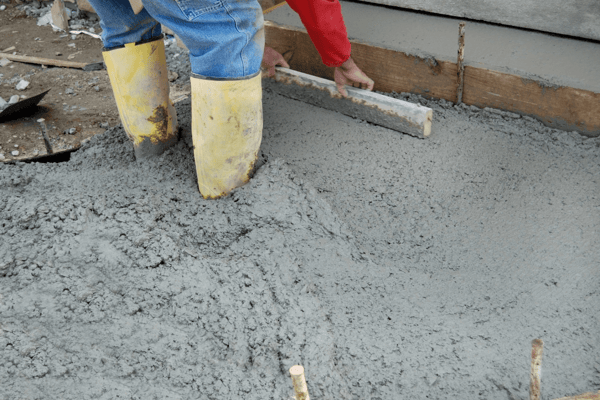Bill Gates is investing in it.
Scientists are making 3-D printers that will convert Martian sand into it ... And it looks pretty good too.
But should you mix this building material yourself?
Here's our guide to perfecting your concrete mix ratio.
The Right Concrete Mix Ratio?
Before we move ahead, let's take a few steps back. To understand which ratio will be "the one" for us, we need to clearly understand what "concrete" is. As you probably know, concrete and cement are often used interchangeably but are different things.
Cement is an ingredient in concrete. Concrete is a mixture of cement, water, and aggregate. For the sake of simplicity let's keep it at that.
Since concrete is so widely used and some ancestral form has been used for centuries there a lot of different opinions of what the right ratio of the above ingredients makes the best stuff.

Aggregate: 70 to 85% (by mass)
Aggregates are the chunks you see in concrete. Usually, they're sand, rocks, pebbles, or recycled concrete. Or, even a combination of these things. Aggregates are usually ground down to make concrete.
The size and shape also play a role in the quality of the concrete you make. Aggregates help fill space, which means builders use less cement. Less cement equals more money saved. Aggregates can also reinforce the strength of concrete, its resistance, and its ability to retain or release heat.
If you want to get creative, you can use aggregates to alter the design of your concrete. For example, you can create a Terrazzo aesthetic by strategizing the cut, size, color, and placement of your aggregates. For example, instead of traditional rock, you could use crystalline minerals.
Seashells are an example of an aggregate that goes beyond design. The presence of limestone is what hardens cement and thickens it when water is added. Since shells are primarily made of limestone. So seashells used as aggregate have the potential to improve the durability of your concrete.
The grain, material, and color of your sand can also alter what your concrete looks like and how durable it is. There are a lot of different types of sand. For example, black or white sand could be used instead of traditional building sand to alter the aesthetic.

Binder: 30% to 15% (by mass)
Cement is usually the binder used in concrete. The role of the binder is, you guessed it, to bind things! The binder is what connects all of the materials together in the mix and secures concrete into different shapes.
Portland cement is the generic type of cement that people are usually referring to when they just say "cement."
Cement can be used without aggregates or with aggregates. If you were building a modern cement chair or applying decorative concrete overlays you might only use cement in your mix. Along with a few rebars in your structure for support.
But, if you were making a building, you would probably use some form of an aggregate like fine or coarse sand if you still wanted the clean "cement look" with or without ground rock. The goal is to use enough binder so that it fills all of the space between your aggregates.
Aggregates stacked on top of each other without a binder make them less secure. This means that your structure will be weaker and may crumble. Not enough binder and too much water are two of the biggest reasons for cracked cement.


Water: ??
When we refer to the amount of water in a concrete mix, we're talking about the amount of free water. This means the water added to your mixture in addition to the water used to turn your dry cement powder into a flowly pourable wet material.
A rule of thumb is that the lower your water to cement ratio, the stronger your concrete will be. Too much cement results in brittle concrete. You need just enough to get everything flowing together.
We've left the water ration as a "?" because a handful of variables go into deciding the "right" amount of water to use. For example, if you're only using rock as an aggregate with cement, you won't need much water beyond what's been mixed with the dry cement to get the concrete to get the right consistency.
But, if you're using fine sand with a high absorption rate, you'll need more water.

Why Would Anyone Bother With All of This?
Pre-mixed bags of concrete are available at commercial building suppliers everywhere. So why not just skip all of this and get a premade bag, polish your concrete and call it a day?
We're not going to lie, figuring out a concrete mix ratio yourself might not be worth the effort. But, it really all depends on what you are building and your motives for building it. For example, creating stepping stones for a backyard garden is a lot different than laying a concrete garage floor.
Most makers and craftsmen don't get into making things because it's easy or efficient. Many do it because they get obsessed with the details of things and enjoy engaging in some degree of perfectionist behavior.
With that said, someone who is a designer or maker by trade would probably get a lot of marketability and a nice lil' ego boost from "inventing" their own super special ratio. Some also just think science is fun.
Builders usually need a lot of concrete. This means you need a lot of cement -- which is expensive. Sand and rocks are pretty cheap, so you can really stretch your dollar by making your own concrete when you need to use a lot.
Then there's the environmental aspect. Unfortunately, cement contributes to 5% of the total carbon emission output in the world. That's pretty bad. This is because mining for raw materials produces a ton of pollution.
By limiting the amount of cement you need, you're helping reduce the emissions produced.
Need Help With Your Concrete Mixture?
Figuring out your own concrete mix ratio can be an extremely rewarding process. But the right (or wrong) tools can make a massive difference in the experience.
The right grinding tools can turn any aggregate into the perfect aggregate. They can also save you a ton of time and a lot of unnecessary pain.
If you've found this blog post, you've probably seen all kinds of advice about how to mix concrete the "right" way. Since the best response is so objective, we're here to help answer questions.
Reach out to us for help with your concrete project!

3 comments